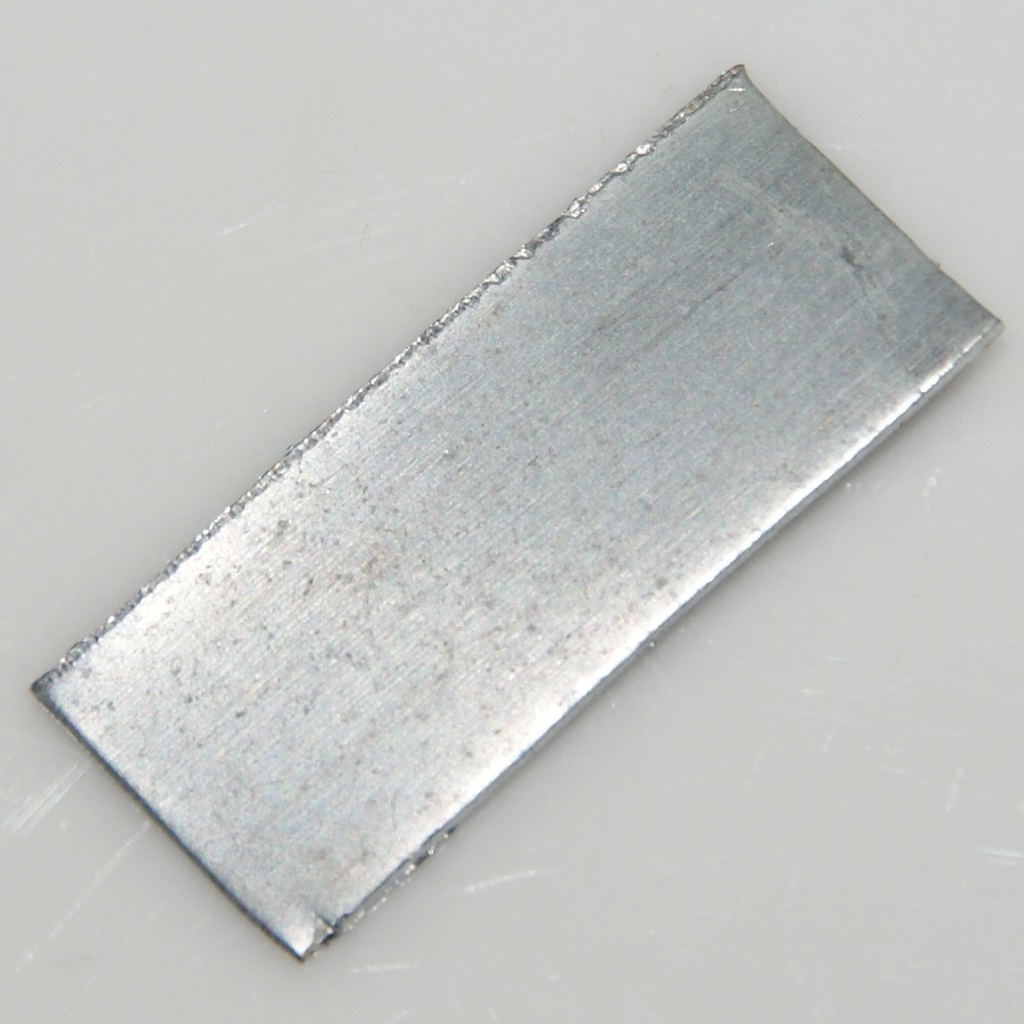Cink
30
Zn
Skupina
12
Perioda
4
Blok
d
Protoni
Elektroni
Nevtroni
30
30
35
Splošne lastnosti
Vrstno število
30
Atomska teža
65,38
Masno število
65
Kategorija
Prehodne kovine
Barva
Skrilavčevo siva
Radioaktivno
Ne
From the German word Zink, of obscure origin
Kristalna struktura
Heksagonalna
Zgodovina
Metallic zinc was produced in the 13th century A.D. India by reducing calamine with organic substances such as wool.
The metal was rediscovered in Europe by Andreas Sigismund Marggraf in 1746.
He heated a mixture of calamine ore and carbon in a closed vessel without copper to produce the metal.
The metal was rediscovered in Europe by Andreas Sigismund Marggraf in 1746.
He heated a mixture of calamine ore and carbon in a closed vessel without copper to produce the metal.
Elektroni po lupinah
2, 8, 18, 2
Razporeditev elektronov
[Ar] 3d10 4s2
Zinc is referred to in nonscientific contexts as spelter
Fizikalne lastnosti
Faza snovi
Trdnina
Gostota
7,134 g/cm3
Tališče
692,68 K | 419,53 °C | 787,15 °F
Vrelišče
1180,15 K | 907 °C | 1664,6 °F
Talilna toplota
7,35 kJ/mol
Izparilna toplota
119 kJ/mol
Toplotna kapaciteta
0,388 J/g·K
Zastopanost v Zemljini skorji
0,0078%
Zastopanost v vesolju
0,00003%

CAS številka
7440-66-6
PubChem CID številka
23994
Atomske lastnosti
Atomski polmer
134 pm
Kovalentni polmer
122 pm
Elektronegativnost
1,65 (Paulingova lestvica)
Ionizacijski potencial
9,3942 eV
Atomski volumen
9,2 cm3/mol
Toplotna prevodnost
1,16 W/cm·K
Oksidacijska stanja
1, 2
Uporabe
Because of its corrosion resistance, zinc is often plated to other metals in a process called galvanization.
Zinc is an essential trace element for animals and plants.
Large quantities of zinc are used to produce die castings, which are used extensively by the automotive, electrical, and hardware industries.
Zinc is an essential trace element for animals and plants.
Large quantities of zinc are used to produce die castings, which are used extensively by the automotive, electrical, and hardware industries.
Zinc is not considered to be particularly toxic
Izotopi
Stabilni izotopi
64Zn, 66Zn, 67Zn, 68Zn, 70ZnNestabilni izotopi
54Zn, 55Zn, 56Zn, 57Zn, 58Zn, 59Zn, 60Zn, 61Zn, 62Zn, 63Zn, 65Zn, 69Zn, 71Zn, 72Zn, 73Zn, 74Zn, 75Zn, 76Zn, 77Zn, 78Zn, 79Zn, 80Zn, 81Zn, 82Zn, 83Zn